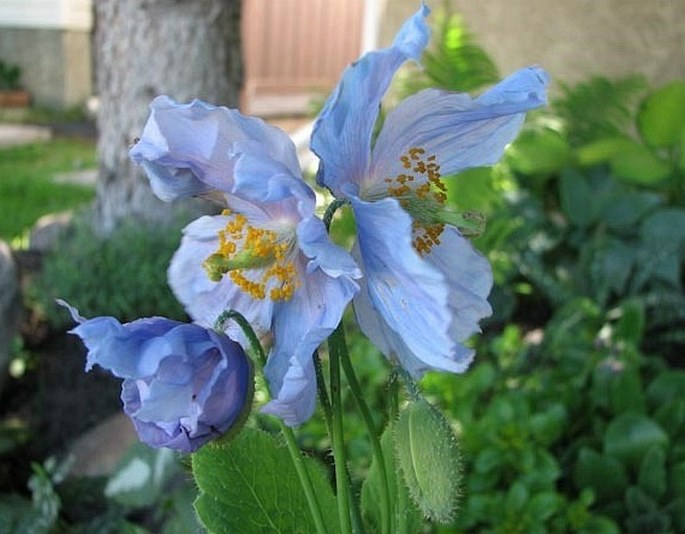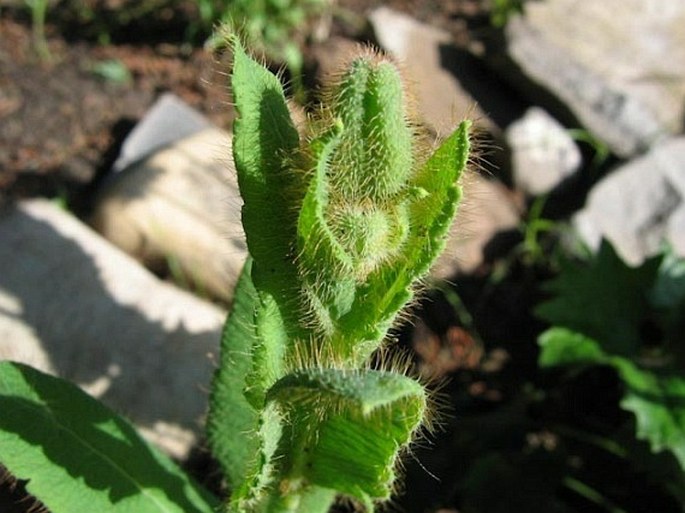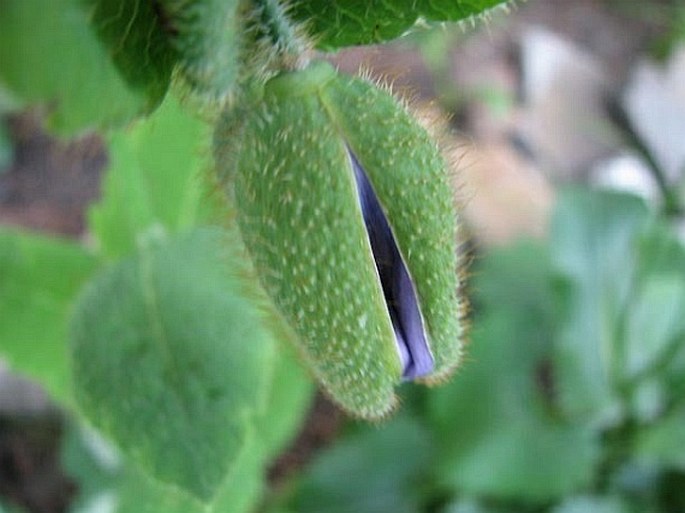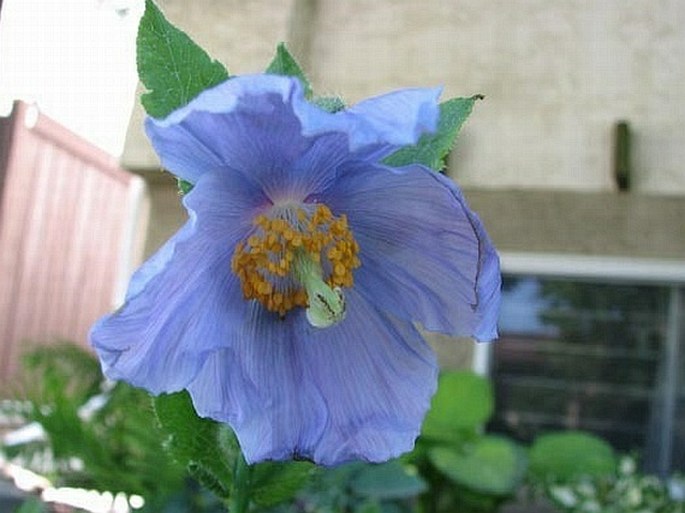Syn.: Cathcartia betonicifolia (Franch.) Prain
Family: Papaveraceae Juss.

Distribution: Southeast Tibet, northwest of Chinese province Yunnan and northern Burma.
Ecology: Found in herbaceous layer of mountain forests and neighbouring grass slopes in elevations 3000–4000 m. Blooms from June ‘till August.
Description: Biennial but mostly perennial herb. Stem erect, 30–90(–150) cm tall, up to 1.3 cm thick at base, solitary, hairy. Basal leaves petiolate, lanceolate to ovoid, 5–15 cm long, 4–7 cm wide, at base cordate to truncate, hairy, lower stem leaves similar to basal ones, upper ones smaller, sessile. Inflorescence 3–6 flowered, calyx hairy, dropping early, petals 4, at terminal flowers petals 5–6, blue to purple, rarely white, 3–5 × 2–3.5 cm. Fruit is a capsule, 2.5–4.5 × 0.8–1 cm.
Use: Grown in appropriate climates around the world in gardens and parks. For example in early 20th century W. R. Reader introduced this plant to Calgary parks in foothills of Rocky Mountains. Cultivation in Central Europe is problematic.
Note: Genus Meconopsis includes some 54 species of which, one occurs in western Europe (Meconopsis cambrica), the rest occur in Himalayas only.



These images were taken in culture – Canada, Calgary (June 2013).


